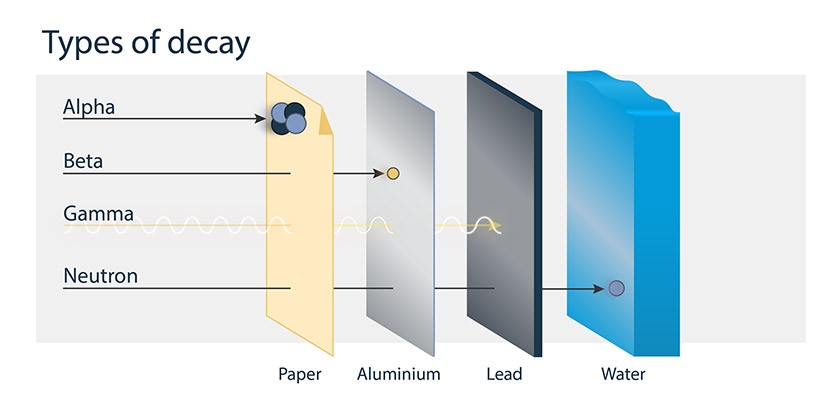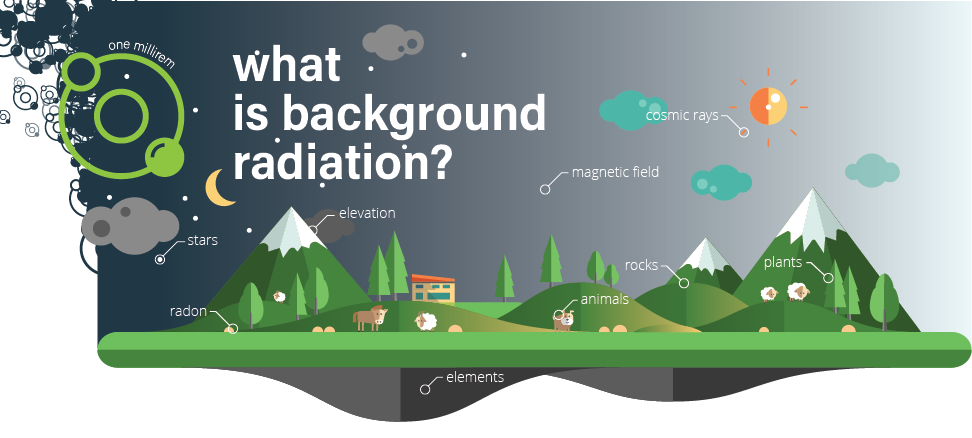




ADDRESS
ATOMIC ENERGY REGULATORY AUTHORITY (AERA)
2nd Floor, Chief M’mbelwa House,
Robert Mugabe Crescent, City Center
Private Bag 368
Lilongwe 3
Malawi
CONTACT DETAILS
Tel: +265 1 774 691
Tel: +265 1 774 694
Email: Info@aera.org.mw
Website: www.aera.org.mw
Facebook/AERA
Home About Us Core Functions Understanding Radiation Resource Library News and Events Contact Aera
What is Radiation?
Radiation is the emission or transmission of energy in the form of waves or particles through space or through a material medium. There are many kinds or forms of radiation around us ranging from radio waves to x-ray.

2. Non-ionizing
Non-ionizing radiation has enough energy to excite atoms, making them move more rapidly. Examples of non-ionizing sources include microwave ovens, radio transmissions, cell phones, and visible light. Both Ionizing and non-ionizing radiation fall within the Electromagnetic Spectrum as shown in the diagram 1
Types of radiation
There two types of Radiation as detailed below.
1. Ionizing
Ionizing radiation has enough energy to change atoms by knocking off electrons from them, a process called ionization. Ionizing radiation can travel unseen and pass through materials such as air, water, and living tissue depending on penetrating power. Four main kinds of Ionizing radiation are Alpha(a), Beta(ß) and Gamma(?) and Neutrons(n).
Diagram 1
Sources of Radiation
All living creatures, from the beginning of time, have been, and are still being, exposed to radiation. People are constantly exposed to small amounts of ionizing radiation from the environment as they carry out their normal daily activities; this is known as background radiation. We are also exposed through some medical treatments and through activities involving radioactive material.
a. Natural Background Radiation
Natural background radiation comes from three sources:
b. Man-made radiation sources
Every day, we use Ionizing radiation to help us live healthy lives. Our main exposure to ionizing radiation in manmade sources is through the use of diagnostic medical examinations. The goal of medical diagnostic imaging is for the benefits to far outweigh the risks. Medical examinations that use ionizing radiation include;
Cosmic Radiation
The earth, and all living things on it, are constantly bombarded by radiation from space, similar to a steady drizzle of rain. Charged particles from the sun and stars interact with the earth’s atmosphere and magnetic field to produce a shower of radiation, typically beta and gamma radiation. The dose from cosmic radiation varies in different parts of the world due to differences in elevation and to the effects of the earth’s magnetic field.
Terrestrial Radiation
The major isotopes of concern for terrestrial radiation are uranium and the decay products of uranium, such as thorium, radium, and radon.
Sources Members of the public
A member of the public is defined as any individual except when that individual is receiving an occupational dose
The most significant source of man-made radiation exposure to the public is from medical procedures, such as diagnostic X-rays, nuclear medicine, and radiation therapy. Some of the major isotopes would be I-131, Tc-99m, Co-60, Ir-192, Cs-137, and others.
Internal Radiation
In addition to the cosmic and terrestrial sources, all people also have radioactive potassium-40, carbon-14, lead-210, and other isotopes inside their bodies from birth. The variation in dose from one person to another is not as great as the variation in dose from cosmic and terrestrial sources
- X-ray
- Computer Tomography (CT) scans
- Positron Emission Tomography (PET) scans
- Fluoroscopy
- Nuclear medicine procedures
In addition to diagnostic medical examinations, Nuclear Power Plants (NPP) are also sources of manmade radiation. Although all people are exposed to natural sources of radiation, there are two distinct groups exposed to man-made radiation sources

Radioactive material is also found throughout nature. It is in the soil, water, and vegetation. Low levels of uranium, thorium, and their decay products are found everywhere. Some of these materials are ingested with food and water, while others, such as radon, are inhaled.
Members of the public are exposed to radiation from the nuclear fuel cycle, which includes the entire sequence from mining and milling of uranium to the actual production of power at a Nuclear Power Plants (NPPs). This would be uranium and its daughter products.
Workers
Any person who works, whether full time, part time or temporarily, for an employer and who has recognized rights and duties in relation to occupational radiation protection. Workers receive occupational dose and are monitored in order to demonstrate compliance with the radiological protection requirements as required by the Authority.
Radiation Protection
Radiation protection, also known as radiological protection, is defined by the International Atomic Energy Agency (IAEA) as "The protection of people from harmful effects of exposure to ionizing radiation, and the means for achieving this"
Radiation protection, also known as radiological protection, is defined by the International Atomic Energy Agency (IAEA) as "The protection of people from harmful effects of exposure to ionizing radiation, and the means for achieving this"
Time: The amount of radiation exposure increases and decreases with the time people spend near the source of radiation.
Distance: The further away a person is from a radiation source, the less the exposure. Doubling the distance from a point source of radiation decreases the exposure rate to 1/4 the original exposure rate.
Shielding is the placement of an "absorber" between you and the radiation source. It reduces radiation from the radiation source.
Apply for Authorisation


Sunscribe
Newsletter
QUICK LINKS
International Atomic Energy Agency(IAEA)
International Commission Radiological Protection (ICRP)
Library
Understanding Radiation
News & Events
